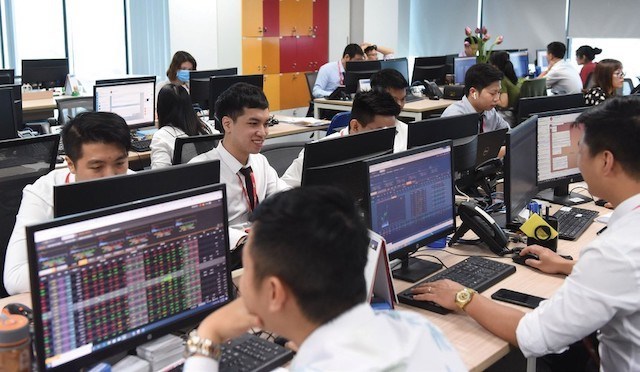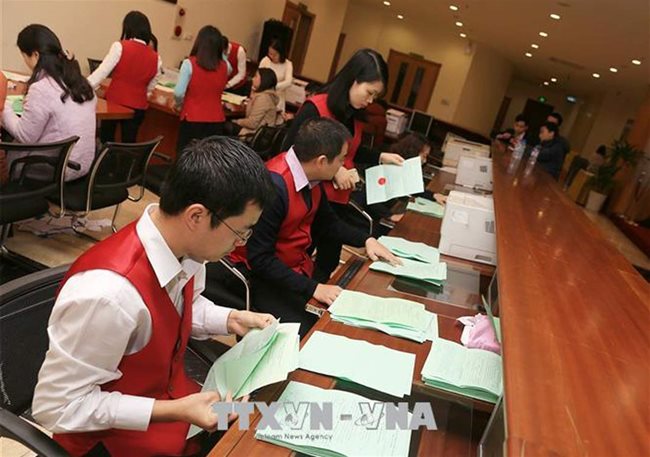|
The Asian Development Bank (ADB) said in its latest issue of the Asia Bond Monitor that Vietnam’s outstanding LCY bonds totaled VND1,360.7 trillion at the end of March this year. The market expanded 9.5% quarter-on-quarter in the first three months of 2020 after recording a decline of 3.8% in the previous quarter. The ADB noted the rebound was entirely driven by the government segment, as outstanding bonds in the corporate sector remained subdued. On an annual basis, overall market growth accelerated to 13.2% year-on-year in the first quarter of this year from 4.3% year-on-year in the previous quarter. Government bonds comprised the bulk of the bond market with a 92.6% share at the end of the quarter versus a 7.4% share for corporate bonds. The total LCY government bonds outstanding at the end of March amounted to VND1,260.3 trillion on a rebound in growth to 10.5% quarter-on-quarter after a decline in the preceding quarter. The increase in market size in the first quarter of 2020 was solely driven by the jump in the stock of central bank bills. On the other hand, outstanding treasury bonds and outstanding government-guaranteed and municipal bonds decreased in the three-month period. Meanwhile, outstanding corporate bonds leveled off at VND100.5 trillion at the end of March, reflecting a decline of 1.7% quarter-on-quarter and 8.5% year-on-year. The ADB ascribed the decline to the absence of new issuance and the maturity of some outstanding debts during the quarter. Yield movements The ADB said Vietnam’s LCY bond yield curve shifted downward for short-term tenors and upward for medium-to-long-term tenors between February 28 and May 15. Bonds with maturities of three years or less saw yield fall between 10 and 25 basis points. The yield for the one-year bond dropped the most, dipping 25 basis points. In contrast, yields for seven- to 15-year bonds were up between 13 and 31 basis points, while the yield for the five-year bond only rose 7 basis points. The opposing movements at the different ends of the yield curve led to a widening of the two-year versus 10-year yield spread from 103 to 131 basis points during the review period. The yield decline at the shorter end of the curve can be traced back to the interest rate cuts of the State Bank of Vietnam (SBV), according to the ADB. The Vietnamese central bank cut its key policy rate to 4.5% from 5% on May 13, following a 100-basis point cut on March 17, resulting in a cumulative 150-basis point rate reduction for the year through the middle of May. The ADB stated that the aggressive stance of the SBV’s interest rate reduction sought to spur the domestic economy against the negative impact of the coronavirus pandemic, which is in line with many central banks’ unprecedented rate cuts around the world. Amid such an uncertain economic environment, the ADB said investors are resorting to holding safe assets such as government securities in the short run, adopting a wait-and-see approach over developments in the coronavirus crisis. On the other hand, the increase in yields at the medium-to-longer end of the curve reflects investors seeking higher returns at the same time that the Government needs to secure money to finance its socioeconomic development programs to support the economy. Some upward bias, especially at the longer end of the curve, can be observed amid rising expectations of expanded and extended fiscal stimulus. The upward pressure therefore reflects investors demanding a higher premium to invest in longer-term bonds. SGT |
||
Gia Phong

Will demand for corporate bonds become weaker because of a new law?
Under the amended Enterprise Law ratified by the National Assembly on June 17, nonprofessional investors are prohibited from trading corporate bonds issued in private offerings from January 1, 2021.

COVID-19-induced uncertainty continues to drag on emerging East Asian bonds
The coronavirus (COVID-19) pandemic continues to drag on local currency bond markets in emerging East Asia, including Viet Nam, as investment sentiment globally and in the region wane and containment measures limit economic activity.
